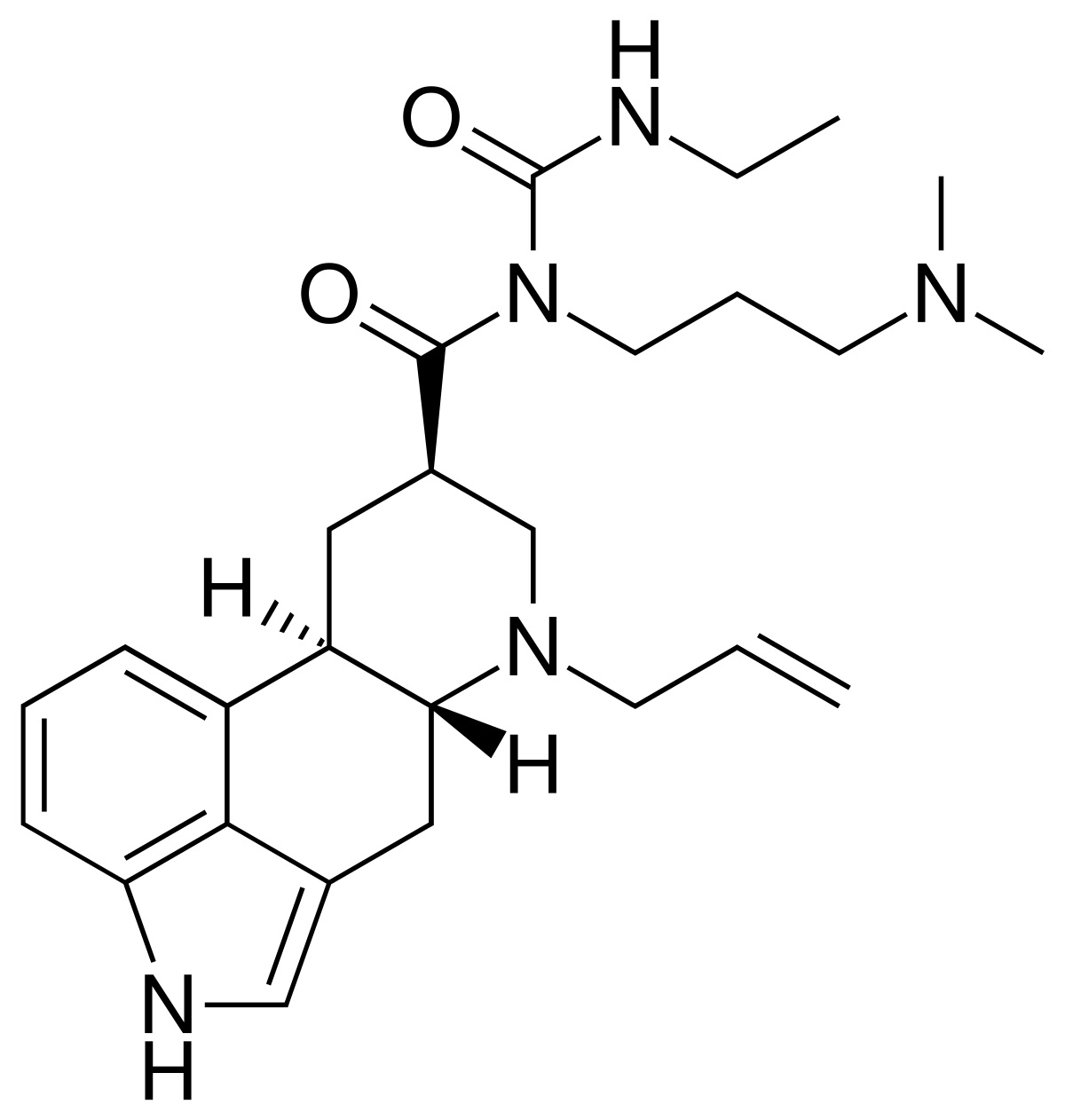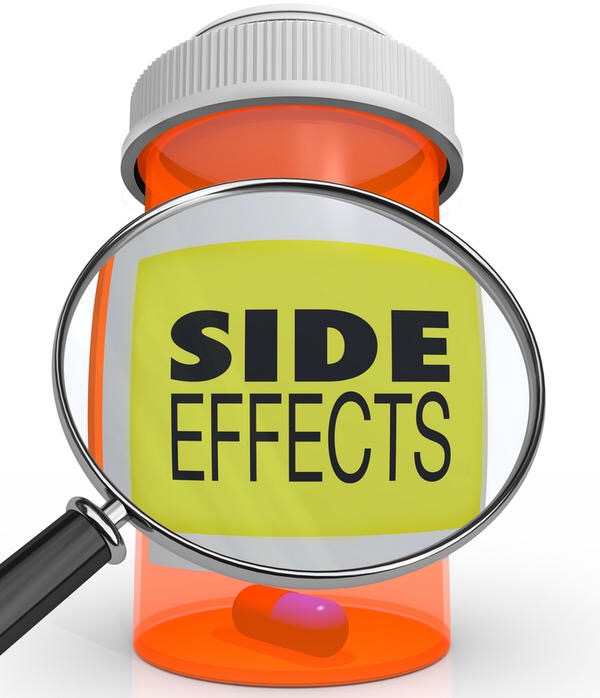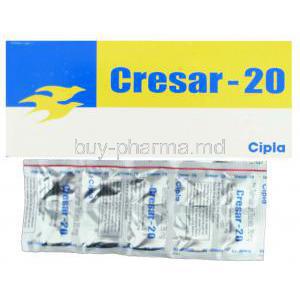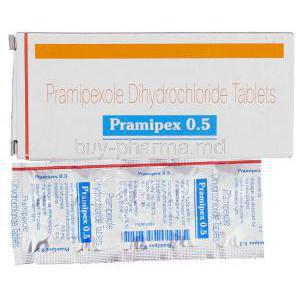It's crucial to understand its various aspects before starting the treatment. This article will provide an in-depth analysis of this dopamine agonist, covering everything from its mechanism of action to potential side effects and dosage guidelines.
By delving into the science behind Cabergoline, we'll explore how it functions within the body and discuss its numerous benefits. We'll look at this drug's advantages and disadvantages to help you make an educated decision when obtaining Cabergoline.
Furthermore, we will address essential factors such as how long it takes for Cabergoline to work effectively and what withdrawal symptoms one might experience upon discontinuation. Lastly, our discussion on consulting a healthcare provider emphasizes the importance of professional guidance while navigating cabergoline treatment options.
Table Of Contents: Buy Cabergoline
- What is Cabergoline?
- Benefits of Cabergoline
- Pros and Cons of Cabergoline
- Understanding the Potential Side Effects
- Cabergoline Contraindications
- How Long Does It Take for Cabergoline to Work?
- Cabergoline Withdrawal Symptoms
- Dosage Guidelines for Taking Cabergoline
- Consulting with a Healthcare Provider
- Buy Cabergoline
What is Cabergoline?
Cabergoline is a prescription medication belonging to the class of dopamine agonists. Cabergoline mimics dopamine, which helps control mood, movement, and hormone production. The primary use of cabergoline treatment is to manage conditions related to high levels of prolactin - a hormone produced by the pituitary gland that plays an essential role in lactation and fertility.

Indications for Using Cabergoline
- Hyperprolactinemia: This condition occurs when there's excessive prolactin in the blood. High prolactin levels can disrupt menstrual cycles, fertility issues, and lowered libido or sexual dysfunction for both genders. Cabergoline helps reduce these elevated levels effectively.
- Parkinson's Disease: Although not primarily used for this purpose, some studies have shown that Cabergoline may help alleviate symptoms associated with Parkinson's disease due to its dopaminergic properties.
- Fertility Treatment: In some instances where hyperprolactinemia affects fertility negatively or causes reproductive disorders like polycystic ovary syndrome (PCOS), doctors might prescribe Cabergoline as part of a comprehensive treatment plan.
The Mechanism of Action Cabergoline
Cabergoline is a strong and enduring dopamine agonist derived from ergot. By binding to D2 receptors in the brain, Cabergoline suppresses prolactin secretion from the pituitary gland. By activating these receptors, Cabergoline inhibits the release of prolactin, thereby reducing its levels in the blood.
One key feature distinguishing Cabergoline from other dopamine agonists is its high selectivity for D2 receptors. This selectivity allows it to effectively lower prolactin levels without causing significant side effects related to activating or inhibiting other dopamine receptor subtypes.
- Inhibition of Prolactin Release: The primary action of Cabergoline involves binding to D2 receptors on lactotroph cells (prolactin-secreting cells) within the anterior pituitary gland. This imperative leads to decreased intracellular calcium concentrations and reduced exocytosis (release) of prolactin-containing vesicles into circulation.
- Dopaminergic Stimulation: Besides lowering prolactin levels, Cabergoline exhibits dopaminergic activity throughout various regions in the brain due to its ability to activate D2-like dopamine receptors (D3 and D4). These actions contribute towards some therapeutic benefits observed with this drug, such as improvement in motor function among Parkinson's disease patients.
Besides acting directly on central nervous system targets like dopamine neurons and their associated receptor sites, there are indications that Cabergoline may also affect peripheral tissues. For instance, studies have shown that Cabergoline can improve endothelial function and reduce blood pressure in patients with hyperprolactinemia.
Cabergoline treatment is commonly used for conditions such as hyperprolactinemia, pituitary adenomas, and Parkinson's disease. Its effectiveness and tolerability have made it popular among physicians and patients.
In summary, the mechanism of action of Cabergoline revolves around its ability to selectively activate D2 receptors within the brain and peripheral tissues. This reduces prolactin secretion from lactotroph cells and improves dopaminergic signaling throughout various neural pathways.
The exact modus operandi of Cabergoline is intricate but can be divided into a few components. Grasping this system is critical to getting the potential advantages it may present for those receiving treatment, which will be delved into in the following section.
Cabergoline is a potent dopamine agonist that selectively activates D2 receptors to inhibit prolactin release and improve dopaminergic signaling. It is commonly used for conditions such as hyperprolactinemia, pituitary adenomas, and Parkinson's disease due to its effectiveness and tolerability. Cabergoline can also have peripheral effects on tissues like endothelial cells, improving function in patients with hyperprolactinemia.
Benefits of Cabergoline
Cabergoline is a potent dopamine agonist that benefits patients with different medical conditions. Some of the most notable advantages include:
Treatment of Hyperprolactinemia
Hyperprolactinemia is characterized by abnormally high levels of prolactin in the blood, leading to menstrual irregularities, infertility, and galactorrhea (breast milk production unrelated to pregnancy). Cabergoline treatment effectively reduces prolactin levels and helps manage these symptoms.
Managing Symptoms of Parkinson's Disease
Parkinson's disease results from the loss of dopamine-producing cells in the brain. Cabergoline, a dopamine agonist, simulates dopamine's effects and reduces motor symptoms associated with Parkinson's disease.
Improving Fertility and Managing Reproductive Disorders
- Fertility: By normalizing prolactin levels, Cabergoline may help improve fertility in both men and women experiencing hyperprolactinemia-related infertility issues.
- Ovulation induction: In some cases, Cabergoline has been used as part of ovulation induction protocols for women undergoing assisted reproductive techniques such as In Vitro Fertilization (IVF).
Enhancing Libido and Sexual Function
Cabergoline may benefit libido and sexual function in both men and women, as it has been found to reduce prolactin levels which can impede them. Some studies suggest that Cabergoline may help with premature ejaculation in men.
Cabergoline offers potential advantages that could be advantageous for people with diverse medical circumstances. Yet, before utilizing this drug, it is essential to contemplate its advantages and disadvantages to make an informed judgment.
Pros and Cons of Cabergoline
Like any medication, Cabergoline has its own advantages and disadvantages. Understanding these pros and cons can help you decide whether this dopamine agonist is the right choice for your cabergoline treatment.

Pros:
- Treatment of Hyperprolactinemia: Cabergoline effectively lowers prolactin levels in patients with hyperprolactinemia, a condition characterized by excessive production of the hormone prolactin.
- Parkinson's Disease Management: As a dopamine agonist, Cabergoline helps alleviate symptoms associated with Parkinson's disease by stimulating dopamine receptors in the brain.
- Fertility Improvement: By reducing prolactin levels, Cabergoline can improve fertility in both men and women experiencing reproductive issues due to elevated prolactin levels.
- Enhanced Libido & Sexual Function: Some studies have shown that Cabergoline may help improve libido and sexual function by increasing dopamine activity within the brain.
Cons:
- Potential Side Effects: Cabergoline use may accompany side effects such as nausea, dizziness, headache, or constipation. Discussing these potential risks with your healthcare provider before starting treatment (see the section on "Understanding Potential Side Effects") is essential.
- Withdrawal Symptoms: Abruptly stopping or significantly reducing your dose of Cabergoline can lead to withdrawal symptoms such as fatigue, depression, or a return of hyperprolactinemia symptoms. It is crucial to consult with your healthcare provider before making any changes to your medication regimen (see the section on "Cabergoline Withdrawal Symptoms").
- Drug Interactions: Cabergoline may interact with other medications, potentially leading to adverse effects or reduced effectiveness. Inform your doctor about all medicines you take to avoid possible drug interactions (see "Drug Interactions and Precautions" section).
- Slow Onset of Action: While some patients may experience relief from their symptoms relatively quickly, others might require several weeks for cabergoline treatment to take full effect (see the section on "How Long Does It Take for Cabergoline to Work?").
Before understanding the potential side effects of Cabergoline, weighing its pros and cons is essential. Considering both advantages and disadvantages can assist you in deciding if this medication is suitable for your needs.
Cabergoline has pros and cons that should be considered before deciding if it is the proper treatment. Pros include treating hyperprolactinemia, managing Parkinson's disease symptoms, improving fertility, and enhancing libido, while cons have potential side effects, withdrawal symptoms, drug interactions, and slow onset of action. Discussing these factors with your healthcare provider before starting cabergoline treatment is essential.
Understanding the Potential Side Effects
As with other medicines, Cabergoline could lead to adverse effects in some people. While many people tolerate this drug well, it's essential to be aware of potential adverse reactions and discuss them with your healthcare provider.

Common Side Effects
- Dizziness or lightheadedness
- Nausea or vomiting
- Headache
- Fatigue or weakness
- Constipation or diarrhea
- Source: WebMD - Cabergoline Oral: Uses, Side Effects, Interactions
Rare but Serious Side Effects:
- Persistent coughing or shortness of breath (which could indicate lung problems)
- Sudden onset of back pain (possibly related to heart valve issues)
- Allergic reactions include rash, itching/swelling (especially on the face/tongue/throat), severe dizziness, and trouble breathing (Anaphylaxis is a rare but severe allergic reaction that requires immediate medical attention).
- Source: MedlinePlus - Cabergoline - Drug Information and Possible Side Effects
Contact your healthcare provider immediately if you experience any unusual symptoms while taking cabergoline treatment. They can help determine if the side effects are due to Cabergoline or another factor and provide guidance on managing them.
Managing Side Effects
To minimize potential side effects, follow your healthcare provider's dosage instructions carefully and report any concerns promptly. Sometimes, they may adjust your dose or recommend additional medications to alleviate specific symptoms. Additionally, staying hydrated and maintaining a healthy lifestyle can help reduce the risk of adverse reactions during cabergoline treatment.
Grasping the potential repercussions of Cabergoline ahead of consumption is crucial, as they may differ from individual to individual. Realizing how long Cabergoline needs to take effect is similarly critical for guaranteeing you get ideal outcomes.
Cabergoline Contraindications
While Cabergoline can be a highly effective medication for treating hyperprolactinemia, Parkinson's disease, and reproductive disorders, it is essential to understand the potential contraindications before starting treatment.
Contraindications for Cabergoline Use
- Pregnancy: Cabergoline should not be used during pregnancy as it may harm the developing fetus.
- Hypersensitivity: Individuals who have had an allergic reaction to Cabergoline or other ergot derivatives should not use this medication.
- Liver Disease: Patients with liver disease may experience increased side effects from Cabergoline due to decreased drug metabolism.
- Fibrotic Disorders: There have been rare reports of fibrotic disorders such as pleural effusion and pulmonary fibrosis in patients taking cabergoline long-term. It is recommended that patients undergo regular monitoring for these conditions while on treatment.
If you are considering using Cabergoline but have any contraindications, speak with your healthcare provider about alternative treatments or medications that may be more appropriate for your needs. Additionally, if you experience any new symptoms while taking Cabergoline, contact your healthcare provider immediately to discuss possible adjustments to your treatment plan.
It is also important to note that certain medications can interact with Cabergoline, increasing the risk of side effects or decreasing its effectiveness. Always inform your healthcare provider about all medicines you currently take before starting treatment with Cabergoline.
Understanding the potential contraindications of using Cabergoline is crucial in ensuring safe and effective treatment outcomes. Discuss any concerns or questions regarding Cabergoline with your healthcare provider.
Sources:
- Cabergoline FDA Label
- Pleural effusion and pulmonary fibrosis associated with cabergoline therapy for hyperprolactinemia: a case report and literature review
If you are looking for cabergoline treatment, BuyPharma offers a variety of dopamine agonists to choose from. Visit our website to learn more.
How Long Does It Take for Cabergoline to Work?
The effectiveness of cabergoline treatment can vary depending on several factors, such as the individual's medical condition, age, and overall health. Generally speaking, patients may start noticing improvements in their symptoms within a few weeks of beginning cabergoline therapy.
Factors Affecting Cabergoline Effectiveness
- Dosage: The prescribed dosage of Cabergoline plays a crucial role in determining how quickly it takes effect. Your healthcare provider will typically recommend an initial low dose and gradually increase it based on your response to the medication.
- Type of Condition: The duration required for Cabergoline to show its effects depends on the treatment condition. For instance, individuals with hyperprolactinemia might experience faster results than those using Cabergoline for Parkinson's disease management.
- Patient Compliance: Adhering to your healthcare provider's instructions regarding dosage and frequency is essential for optimal results from cabergoline therapy. Skipping doses or not taking the medication as directed can affect its efficacy.
In some cases, patients may require long-term use of this dopamine agonist before experiencing significant improvements in their symptoms. It is important to regularly communicate with your healthcare provider throughout treatment to assess progress and make any necessary adjustments.
If you are concerned about how long it will take for cabergoline treatment to work effectively in managing your condition or improving fertility issues related to hyperprolactinemia, consult a qualified medical professional specializing in reproductive endocrinology or neurology. They can provide personalized guidance and recommendations based on your needs and circumstances.
Notably, the consequences of Cabergoline may take some time, potentially even multiple months, to manifest. Therefore, patients taking Cabergoline should be aware of any potential withdrawal symptoms due to prolonged use.
Cabergoline's effectiveness depends on various factors, such as the patient's medical condition, age, and dosage prescribed. Patients may start noticing improvements in their symptoms within a few weeks of beginning cabergoline therapy; however, long-term use may be required for significant improvement. Following healthcare provider instructions carefully is crucial, and maintaining a healthy lifestyle during treatment with dopamine agonists like Cabergoline is vital.
Cabergoline Withdrawal Symptoms
Cabergoline is a drug used to address conditions such as hyperprolactinemia, Parkinson's disease symptoms, and fertility issues; however, its abrupt discontinuation can lead to withdrawal symptoms. However, it is essential to understand the potential withdrawal symptoms associated with stopping cabergoline treatment abruptly.

Potential Withdrawal Symptoms
- Dizziness or lightheadedness
- Nausea and vomiting
- Headaches or migraines
- Fatigue or weakness
- Mood changes, including depression and anxiety
If you have any withdrawal symptoms after ceasing cabergoline treatment, seeking medical advice on how best to manage them is essential.
Tapering Off Cabergoline Safely
To minimize the risk of experiencing withdrawal symptoms when stopping cabergoline treatment, it's essential to follow a gradual tapering process under your healthcare provider's supervision. This typically involves reducing the dosage over several weeks until you no longer take the medication. Your doctor will provide personalized instructions tailored to your needs and medical history.
Monitoring Progress During Tapering Process
Your healthcare provider might advise regular assessments during tapering to track your progress and ensure any side effects are handled suitably. These appointments may include blood tests to measure prolactin levels to determine if additional adjustments need to be made in response to changing hormone levels throughout this period.
Managing Withdrawal Symptoms with Supportive Care
Sometimes, your healthcare provider may recommend supportive care to help manage withdrawal symptoms as you taper off Cabergoline. For symptom relief, your healthcare provider may recommend over-the-counter pain relievers for headaches or migraines, antiemetics to combat nausea and vomiting, and counseling/therapy sessions to tackle any mood alterations.
It is essential to be aware of the potential cabergoline withdrawal symptoms and take appropriate measures if they occur. Having discussed the possible withdrawal symptoms of Cabergoline, let us now explore dosage guidelines for its safe and effective use.
Dosage Guidelines for Taking Cabergoline
The appropriate dosage of Cabergoline varies depending on the individual's medical condition, response to treatment, and other factors. Following your healthcare provider's recommendations when taking this medication is crucial. This section will provide general guidelines for cabergoline dosages in different scenarios.
Hyperprolactinemia Treatment
For managing hyperprolactinemia, the usual initial dosage is 0.25 mg twice weekly, with progressive boosts dependent on prolactin amounts and patient acceptance. The maximum recommended dose is 1 mg per week.
Parkinson's Disease Management
In managing Parkinson's disease, the initial dosage usually starts at 0.125 mg once or twice daily, gradually increasing as needed up to a maximum of 4.5 mg per day.
Fertility and Reproductive Disorders Treatment
To improve fertility or manage reproductive disorders associated with elevated prolactin levels, such as polycystic ovary syndrome (PCOS), patients may be prescribed doses ranging from 0.25 mg to 1 mg per week, depending on their specific needs.
Note:
- Do not exceed the prescribed dosage: Taking more than the recommended amount can increase the risk of side effects without providing additional benefits.
- Dosage adjustments: Your healthcare provider may adjust your dosage based on your response to treatment, side effects experienced, and other factors.
- Duration of treatment: The duration of cabergoline treatment varies depending on the condition and individual patient needs. Adherence to your healthcare provider's instructions concerning how long you should take Cabergoline is essential.
It is crucial to consult with a healthcare professional before starting or adjusting cabergoline dosages. They will provide personalized guidance based on your specific medical history and needs.
When taking Cabergoline, it is essential to remember that the recommended dosage may need to be adjusted based on individual needs, and consulting a healthcare provider can help achieve optimal results. Consulting a medical professional can be beneficial to achieving the most successful results when taking Cabergoline.
Consulting with a Healthcare Provider
Before starting cabergoline treatment, it is crucial to consult with a healthcare provider to ensure the medication is appropriate for your specific needs and medical conditions. Before starting cabergoline treatment, you must consult with a healthcare provider to evaluate your health history, current medications, and any potential drug interactions to determine if this medication suits you.
Your healthcare provider will also discuss proper dosage guidelines based on factors such as age, weight, and severity of symptoms. They may start you on a lower dose initially and gradually increase it depending on how well you tolerate the medication and its effectiveness in managing your condition.
- Mayo Clinic: Cabergoline Oral Route Description
- MedlinePlus: Cabergoline Drug Information
- WebMD: Cabergoline Oral Uses & Side Effects
In addition to discussing possible side effects and withdrawal symptoms associated with cabergoline use, your healthcare provider can offer guidance on lifestyle changes or complementary therapies that may enhance the effectiveness of this dopamine agonist in treating hyperprolactinemia or Parkinson's disease symptoms.
If you experience any adverse reactions or are unsatisfied with the efficacy of cabergoline therapy, contact your healthcare provider immediately for further assessment and potential adjustments to your dosage or alternative treatments. They may adjust your dosage or recommend alternative treatments to ensure optimal health outcomes.
Remember, open communication with your healthcare provider is essential in managing any medical condition effectively. By working together and closely monitoring your progress, you can maximize the benefits of cabergoline treatment while minimizing potential risks.
Buy Cabergoline
In conclusion, Cabergoline is a dopamine agonist commonly used to treat hyperprolactinemia and other conditions related to high levels of prolactin in the body. It works by reducing the production of prolactin and restoring average hormone balance. Despite its advantages, there are possible risks that must be taken into account before using this medication.
Before taking Cabergoline, discussing the risks and benefits with a healthcare provider is essential. After consulting with your doctor, you can buy Cabergoline from Buy-Pharma.md.
Call-to-action: If you want to buy Cabergoline, visit Buy-Pharma.md today and start your journey towards better health!













































